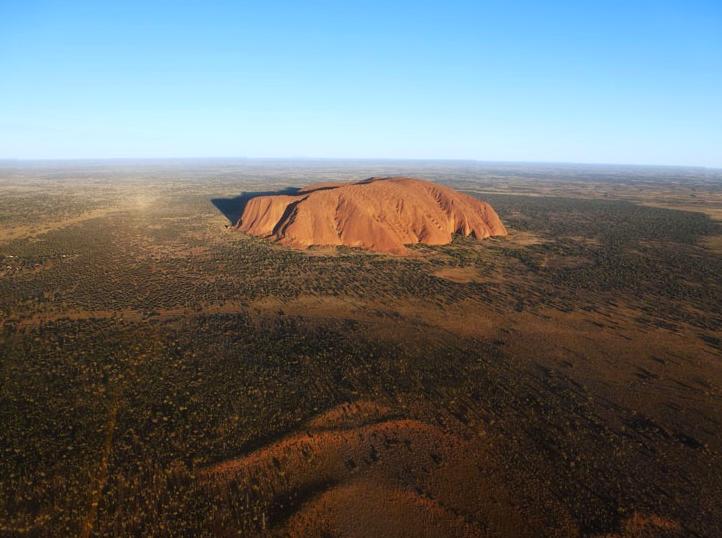What better way to appreciate the depth and richness of Australian culture than embarking on a cultural heritage tour focusing on Anangu traditions? These tours provide a unique opportunity to experience the profound knowledge and customs of the Anangu people, the traditional custodians of Uluru and Kata Tjuta. With expert guides and immersive activities, you will gain invaluable insights into a way of life that has persisted for tens of thousands of years.

The Significance of Anangu Traditions
The Anangu people have a deep and spiritual connection to the land, which is evident in their traditions, stories, and practices. These traditions are passed down through generations and are integral to the Anangu identity. By partaking in a cultural heritage tour, visitors can witness firsthand the significance this culture places on community, storytelling, and the natural environment. You’ll learn about Tjukurpa, the Anangu creation stories that explain the origins of the landscape and its people.
Moreover, understanding Anangu traditions enhances appreciation for the sacred sites they guard, including Uluru. Every feature of the rock and its surroundings tells a story, each with its own lessons and morals. Immersing oneself in these stories offers a profound respect for the culture and the environment it nurtures.

Activities to Expect on a Cultural Heritage Tour
During a cultural heritage tour, participants engage in various activities designed to provide a holistic view of Anangu traditions. Some of these activities include guided walks, traditional art workshops, and bush tucker tours. This not only provides educational value but also makes the experience incredibly engaging and enjoyable.
- Guided Walks: Discover sacred sites and learn their stories.
- Traditional Art Workshops: Create your art under the guidance of skilled Anangu artists.
- Bush Tucker Tours: Taste and learn about indigenous plants used for food and medicine.
Each activity is led by knowledgeable Anangu guides who share their culture with authenticity and passion. These experiences allow visitors to deeply connect with the land and its ancient traditions.

The Role of Storytelling in Anangu Culture
Storytelling is at the heart of Anangu culture. Stories, known as Tjukurpa, are not just tales but a foundational element of their beliefs and laws. These narratives explain the moral guidelines for living harmoniously with each other and with the land. On a heritage tour, you’ll have the privilege to hear some of these stories directly from the Anangu people.
Hearing Tjukurpa stories told in their traditional settings is an emotional and enlightening experience. These stories explain natural phenomena, human nature, and the intrinsic connection between the Anangu and their environment. Storytelling sessions often take place around a campfire in the evening, creating a magical and memorable atmosphere.
Respecting Anangu Customs
One of the key aspects of participating in a cultural heritage tour is learning to respect Anangu customs and traditions. Respect is not only shown through active listening and participation but also through understanding and honoring their cultural protocols. For instance, there are specific areas around Uluru that are sacred and require visitors to follow certain guidelines.

Additionally, photography is restricted in some areas to honor the sanctity of the sites. By complying with these guidelines, visitors show their respect for the Anangu elders and their invaluable heritage. Respecting these customs ensures that such cultural traditions can be preserved and shared with future generations.
Conclusion
Taking a cultural heritage tour focusing on Anangu traditions is a rewarding and enriching experience. It offers a deeper understanding and respect for one of the world’s oldest continuous cultures. From guided walks and traditional art to storytelling, each activity provides a unique insight into the richness of Anangu culture. By participating in these tours, visitors contribute to the preservation and appreciation of this invaluable cultural heritage.
FAQs
What is the best time to take an Anangu cultural heritage tour?
The best time to visit is during the cooler months from May to September. This period offers more pleasant weather conditions for outdoor activities and exploration.
Can children participate in a cultural heritage tour?
Yes, children can participate. Many tours offer family-friendly activities that engage both adults and young ones while fostering an appreciation for Anangu culture.
What should I bring to a cultural heritage tour?
It is essential to bring comfortable walking shoes, a hat, sunscreen, plenty of water, and insect repellent. Additionally, a respectful and open attitude is crucial for a fulfilling experience.
How long do these cultural heritage tours usually last?
Tour durations vary, ranging from a few hours for specific activities to several days for more immersive experiences. Check with tour providers for specific options.
Are there any dietary restrictions on the bush tucker tours?
Many bush tucker tours can accommodate dietary needs, but it’s important to inform the tour operator in advance to ensure any necessary arrangements can be made.
